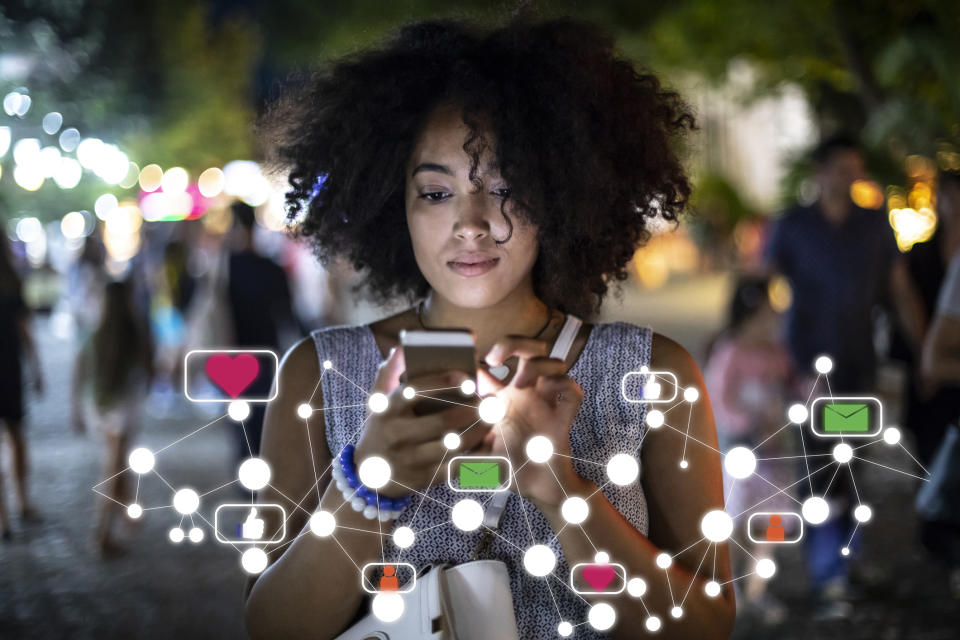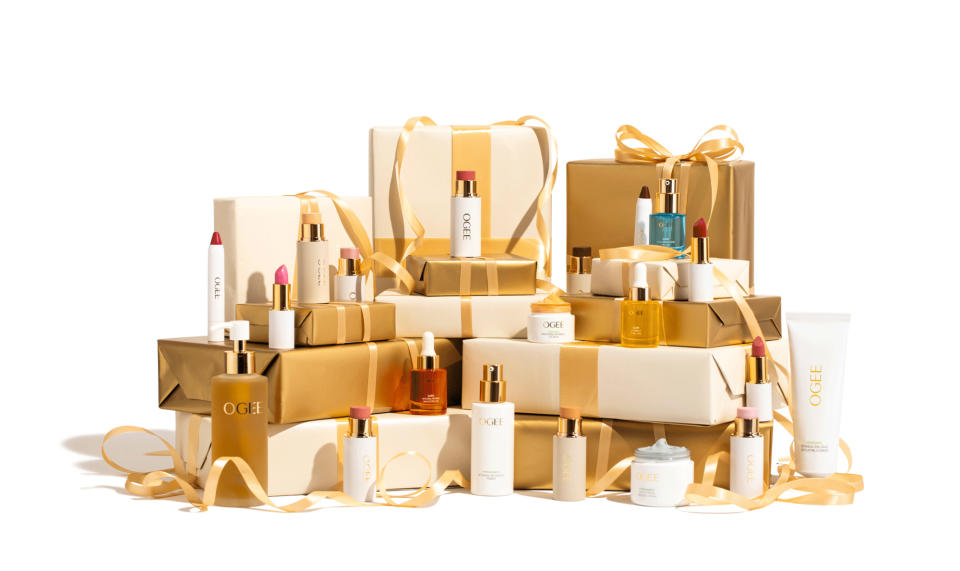How Fashion and Beauty Brands Use AI to Supercharge Digital Marketing

Fashion has flipped to early-adopter mode — and maybe just in time.
The industry that took years to embrace e-commerce has changed its tune, and is now moving quickly to keep up with the technological churn. That rush is perhaps most visible in digital marketing — where fashion, beauty and luxury brands connect with consumers.
More from WWD
Nearly all facets of business today rely on some sort of technology, a point driven home by Friday’s tech meltdown, which saw banks, airlines and businesses around the world disrupted by a software update.
And now that fashion’s on board with technology, brands and retailers have been quick to jump on the next big tech thing, whether it was the metaverse or augmented reality or blockchain.
Now, it’s artificial intelligence — a development that not only opens new doors, but has a knack for supercharging other technologies, putting it right at the nexus of consumer and tech trends.
Already, machine intelligence is taking aim at a range of marketing headaches, from finding alternatives for ad targeting to developing strategy and creative content.
Why AI Holds Marketing Sway
“We are talking about a change that gives single marketers, creators and start-ups the tools to execute like billion-dollar brands at a fraction of the cost,” explained Massimiliano Tirocchi, chief marketing officer of Trafilea Tech E-Commerce Group, the consumer tech group behind shapewear brand Shapermint, lingerie line TrueKind, The Spa Dr. skin care and The BodCon conference.
Fashion and beauty are already using genAI to cut photo production costs, he said. These systems can pump out changes or a smorgasbord of options in an array of formats in moments, not after reshoots or weeks of post-production and editing.
Major houses such as Valentino, Moncler, Prada and more began exploring AI’s advertising and marketing powers early on, while other brands, in a rush to embrace the cutting-edge tools, hit bumpy terrain. In 2023, there was a backlash against Levi’s, which was criticized after it flubbed the introduction of a plan to test genAI-created models, initially saying it was a way to increase “the number and diversity” of models, and later clarifying that statement didn’t properly represent the program, which was paused.
But that hasn’t chilled AI fever. In fact, the tech continues to put new projects on the map, from Etro’s AI-generated campaign at the top of 2024 to European fashion group Mango’s first fully machine-made campaign in July. Even tech purveyor Motorola got in the fashion game with a fantasy runway show featuring generated models wearing styles inspired by its folding smartphones.
According to McKinsey, genAI will add from $150 billion to $275 billion to fashion’s operating profits by 2030, with marketing being one of the top drivers. As these tools constantly evolve, they’re becoming ubiquitous and powering marketing at all levels.
“In just the last 12 months, we have seen how creators, influencers and start-ups can create scripts, caption styles and video editing faster and more creatively without needing a team,” said Tirocchi. “They can even create entire videos, photoshoots and images entirely with genAI and proper prompting.”
Content is just part of the equation. With AI, marketers can do advanced market research and get sentiment analysis quickly, he added, allowing them to pinpoint opportunities in days, not weeks, and organize focus groups or interviews.

Train the bots on internal or market data, and they can tackle entire campaigns, from writing the briefs to creating the content in a flash — complete with the brand’s tone of voice and with specific targets in mind.
Of course, gaffes and AI hallucinations still happen, so human participation and judgment are still needed. But Big Tech is racing to work out the kinks and perfect its machines.
Brands Are Primed for AI Marketing
Tirocchi pointed to Google, Meta and TikTok as examples of major platforms racing to make AI tools so creators and advertisers can generate content faster. And they’re coming at a time when brands are ready to latch onto them.
Over the past few years, fashion and beauty have raised the level of their tech experience, jumping on trends, testing new tech and implementing new learnings. Meanwhile, they’ve seen a significant cycle of disruptive forces push and pull at digital advertising and marketing.
In short order, the industry saw the metaverse hype boil over; gaming giants like Roblox cozy up to retail; a full-blown panic set in when Apple and Google made it harder to track users; a potential U.S. TikTok ban emerge, and an influencer-driven creator economy drive gonzo projections, with Goldman Sachs estimating its worth at nearly half a trillion dollars by 2027.
“From the metaverse in 2020 to the continued politicization of TikTok and other social platforms, marketers understand that trends now change faster than ever,” said Jen Jones, chief marketing officer of Commercetools, a tech-driven digital commerce platform that serves clients from Sephora and NBCUniversal to High Snobiety.
TikTok is one big question mark after lawmakers’ ultimatum to find a U.S. parent company or face removal in U.S. app stores.
Despite a potential unplugging, Jones said brands have not been rushing to log off TikTok.
In fact, Jones said the opposite is happening.
She has “seen a massive shift in digital marketing dollars go towards platforms like TikTok despite its political woes,” she said.
On the platform, her attention’s locked on longer-form videos (of up to 60 minutes), which TikTok started testing. Jones called it “a treasure trove for digital marketing,” that gives brands and retailers easy commerce integrations and room for product promos and discovery — with TikTok using its considerable AI powers to endlessly personalize feeds.
Each new twist and turn has made brands that much smarter. Now they’re looking to put those smarts to work right where they connect with customers.
For a lot of brands, that place is somewhere inside ecosystems like Meta’s.
Big Tech’s Big Vision for Adbots and GenAI
Understanding how to navigate what works best — and in which places or formats — can be a tall order, whether across the internet or within just one ecosystem. Consider Meta, which sees as many as 3.2 billion people hit up one of its apps daily (up 7 percent since last year).
This massive audience stretches across Instagram, Facebook, Messenger and WhatsApp, ranging from organic shares and sponsored posts to Facebook and Instagram Shops and video ads on Reels, the short-form video format that has seen time spent by users jump 50 percent.
Meta released automated AI ad tools last year called Advantage Plus, and since then fashion and beauty brands in particular have been flocking to it, trying to understand all the use cases, said Karin Tracy, head of industry, retail, fashion, beauty and luxury at Meta.

In some ways, Advantage Plus acts like a marketing shortcut. Brands can use it to target an audience across the whole customer journey with a single, AI-driven campaign. This way, they don’t have to deal with splintered ads with differing goals, like prospecting, retargeting and retention. That’s not all.
“Think of it as an end to end solution, [with] everything — targeting, bidding, creative, all of it automated through AI,” she explained. This can matter a great deal in an intensified market, when Chinese e-commerce apps such as Temu and Shein are buying up ad inventory across the internet, sending prices skyrocketing.
The return on ad spend has increased 32 percent, Tracy said, and it goes up 9 percent on average and in cost-per-app actions when used with app campaigns. This machine learning-based approach can pick the most effective placements, putting higher performing creative in front of the most relevant audiences.
The system also features creative genAI tools that can generate or enhance content, as well as reformat it, as necessary.
“If you have one image that’s one size, we can expand it to fit all of our different surfaces [or] text variations — meaning you put in one version of copy, and we can do dozens of versions of it, and the AI will find the best performing combinations of that copy that deliver to the right people,” added Tracy.
This level of flexibility matters to brands like AS Beauty’s Laura Gellar. Since it caters to mature consumers in search of wrinkle creams and serums, it’s easy to assume those ads belong on Facebook. Not so fast, said Scott Kramer, vice president of growth at AS Beauty. Shoppers may discover they have changing needs at different points.
“What’s so powerful about AI is, as consumers evolve in their shopping habits, we don’t need to be like, ‘You know what? We have an older demographic. Let’s only market on Facebook,’” he said. “Let’s let the AI decide, and that’s going to change month over month, year over year … instead of us pigeonholing ourselves.
“There may be women in their 30s who have maybe spent more time in the sun, so they align with a skin type that has the same problems that they see in our ads.”
AS Beauty first dipped a toe into Meta’s AI platform, dedicating 5 to 10 percent of its ad and marketing budget to it last year. But pleased with the results — and after an analysis prompted the company to pull back on search ads, freeing up resources — it raised the spend to roughly 50 percent.
Likewise, clean beauty brand Ogee Beauty saw “instant, massive results,” said Alex Stark, cofounder and chief marketing officer, so it doubled down as well, calling it a “game changer.” In fact, Advantage Plus was particularly powerful when combined with Shops, and the effect contributed to huge online growth for the brand of some 250 percent over the last year.
Stark may not know specifically what’s driving tech’s big AI push into marketing, but he suspects such tools were developed “probably because of iOS updates, the privacy changes and the cookie-less future. I imagine that’s what they’re preparing us for.”
“The uncertainty of the future is part of the reason we want to keep playing in all these other platforms and spaces,” he said.
Best of WWD
Solve the daily Crossword

